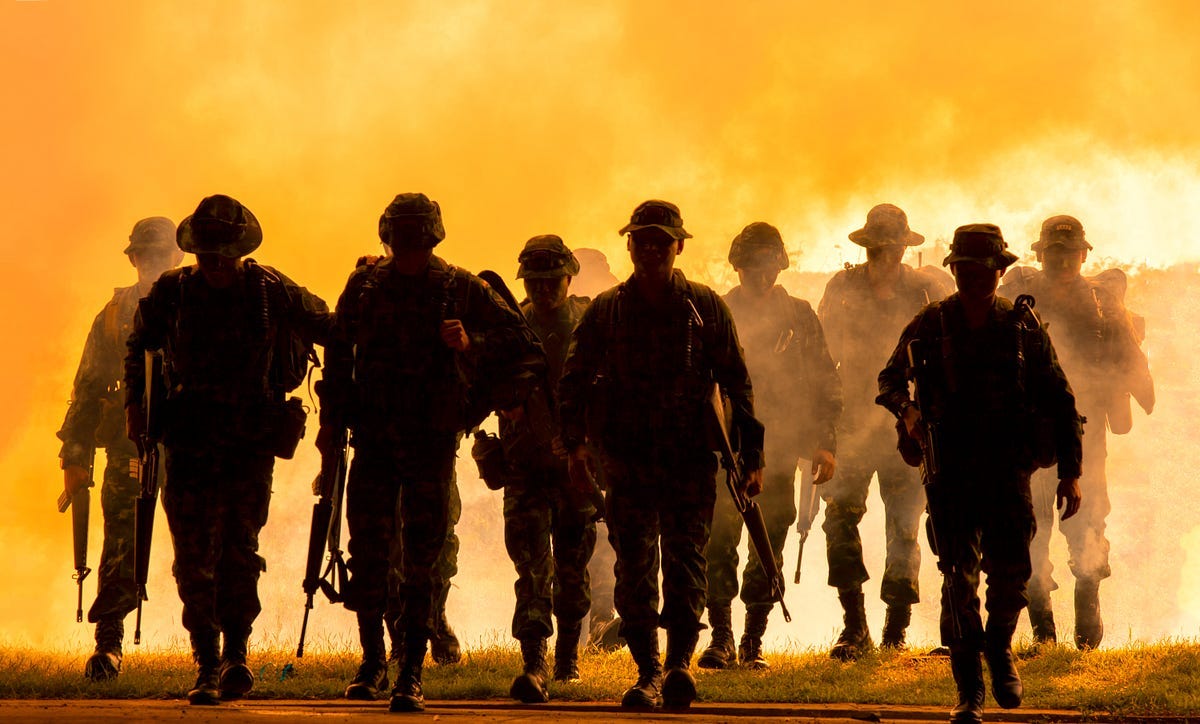Ukraine Lights up Russian Airbase in Kursk
Commander Syrski refuses to adopt a defensive stance.
When President Biden decided to lift long-range restrictions on Western missiles supplied to Ukraine, one of the initial actions likely taken by the Russian armed forces was to relocate their Su-25 fighter jets from Khalino Airbase, situated approximately 7–10 kilometers east of the city of Kursk in Russia.
This airfield was the closest to the frontline in Kursk Oblast and a high-priority asset for President Putin as he sought to evict Ukrainian forces from Russian territory, aiming to secure a stronger position at the negotiation table. Khalino Airbase housed helicopters, fighter jets, and extensive air defense assets, making it a critical military hub for Russian operations in the Kursk region.
Last night, Ukraine launched 12 ATACMS, the U.S.-supplied ground-launched long-range missiles, targeting the base. Although the Russians had relocated their fighter jets, they chose to leave their S-400 air-defense systems and radars at the airbase.
It was a costly mistake.
Ukraine successfully destroyed these critical systems, significantly undermining Russian defensive capabilities in Kursk Oblast.
The Russians remained silent, but evidence strongly suggests that their renowned S-400 air defense system successfully stopped at least some of the ATACMS from burning the ground (!).
There was a strategic reason the S-400 system and its radars were stationed at the airbase: the Russians rely on their figther jets to conduct daily sorties over the frontline in Kursk, maintaining some level of air superiority. However, the destruction of these radars and air defense assets now leaves a gap in their coverage, enabling Ukrainian fighter jets to more effectively target Russian positions in Kursk and allowing drones to penetrate deeper into Russian airspace.
In related developments, France has confirmed it plans to deliver Mirage fighter jets to Ukraine "within a few weeks," signaling urgency. Reports from France since June have consistently indicated a target of late 2024 for these deliveries. The addition of these aircraft, combined with the regular monthly supply of 50 AASM Hammer Glide Bombs, is will bolster Ukraine's offensive capabilities and sustain pressure on Russian frontlines.
This gradual buildup of Ukrainian air power will be critical as Putin appears poised to escalate efforts over the coming weeks. Such developments align with my earlier warnings of an impending intensification of the conflict.
November 4th, 2024: So yes, if I were advising the devil, I would say that this period from November 5th to January 20th is when he should try to unleash everything at his disposal to see how far he can get. Reserves or no reserves, it won’t matter. Russia will continue to attack as much as possible. They will likely employ a sine wave strategy: pushing their resources, losing them, taking a break, and then pushing again.
They are not going to slow down in the next two months. Every recruit will be sent to the front lines. Mindless attacks will become the norm. The problem for Ukraine is that these reckless assaults will drain a lot of their energy and resources.
Earlier today, the Institute for the Study of War (ISW) reported that Russian forces are concentrating in southern Ukraine in preparation for a major counteroffensive: “Russian forces continue to make significant tactical advances in western Donetsk Oblast and are coming closer to enveloping Velyka Novosilka and advancing towards important Ukrainian ground lines of communication (GLOCs) supplying the rest of western Donetsk Oblast and running into eastern Dnipropetrovsk and Zaporizhia oblasts”.
It might seem reckless for Russia to mass its troops and launch another counteroffensive, especially given their current daily losses of approximately 1,500 soldiers in Ukraine. However, it’s essential to consider the intense domestic and economic pressures on President Putin to bring the war to an end swiftly.
With close to half a million Russian troops deployed in Ukraine, this high troop density is critical for holding the front lines. Faced with an increasingly unstable economic situation — exacerbated by a depreciating ruble — Putin likely feels compelled to act decisively.
His options are stark: either risk these troops in a bold attempt to break Ukrainian lines and leverage any gains to push Europe and the U.S. toward negotiations or remain defensive while economic instability escalates.
Such a counteroffensive, while high-risk, could expose vulnerabilities in the Russian front lines. Ukrainian Commander-in-Chief Syrski has already pledged to exploit any weak spots that emerge as a result. If successful, this strategy could further strain Russia’s military resources and morale.
“We have to stop the enemy. But victory is impossible if the Armed Forces work only in defense. We have to seize the initiative and counterattack. We have and we will. You’ll see where and who”.
I expect the pace of developments at the frontline to accelerate significantly over the next four weeks.






Guessing here, Commander Syrski already knows where and when he will attack and the "we will exploit" creates doubt in the Russians about where. I think we will be surprised at the timing and location.
Ukraine has created the conditions for Russia to over extend itself trying to retake Kursk and massing for a counter-offensive in the south. By pulling back from other places on the front line the Ukrainians are further stretching the line as it has to get longer with a reducing number of troops.